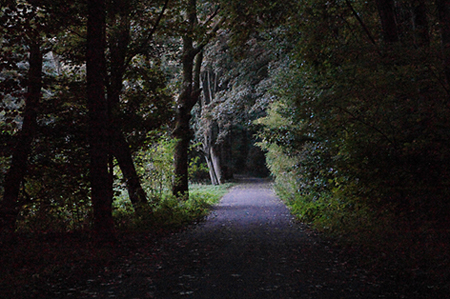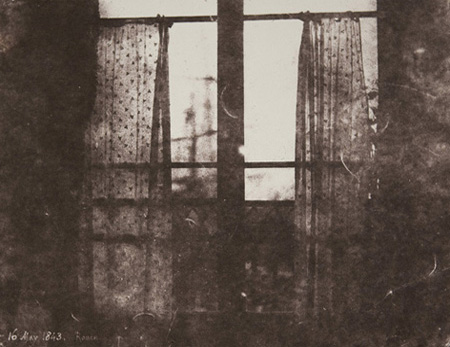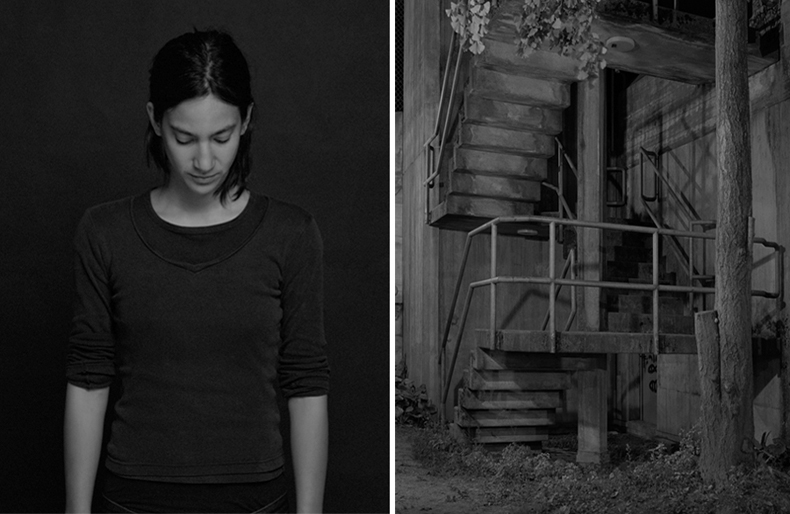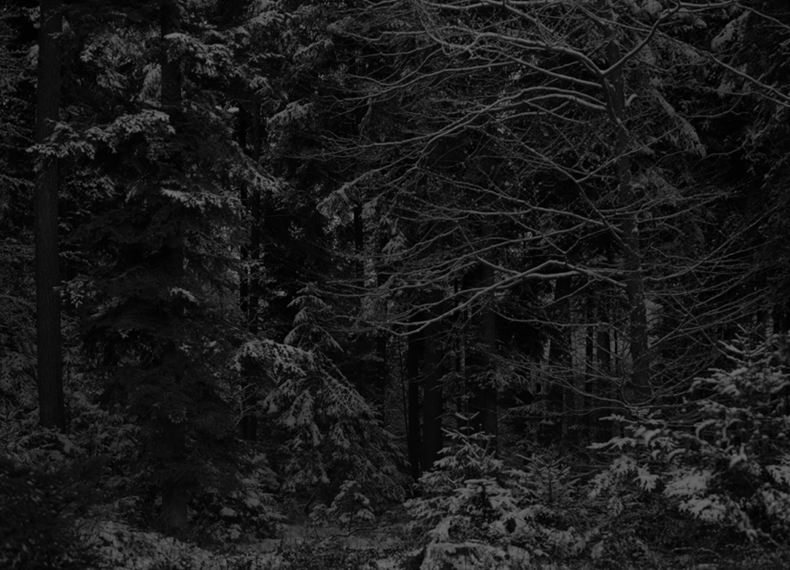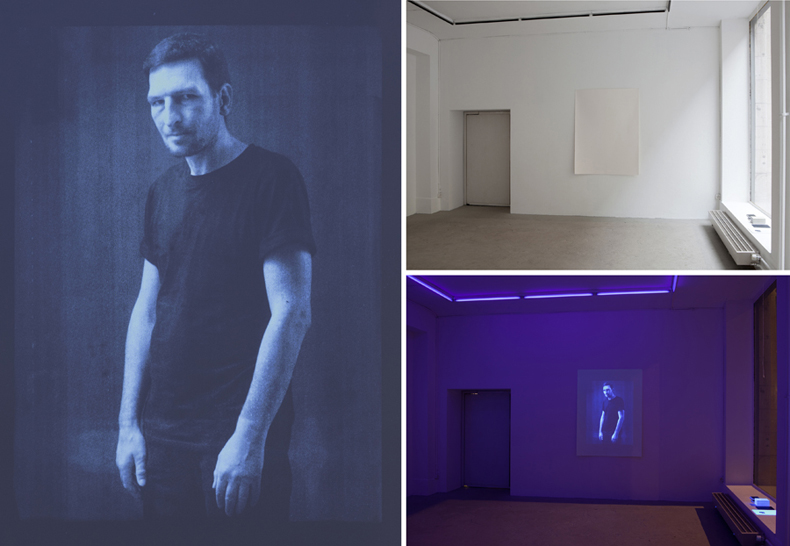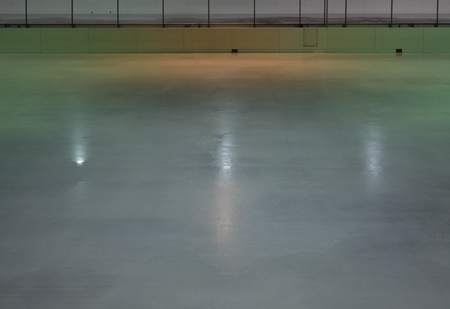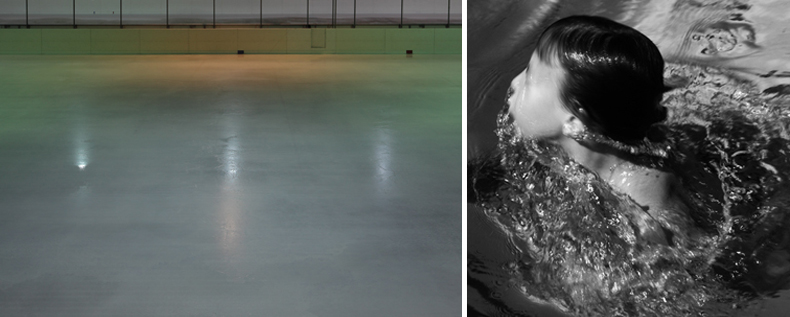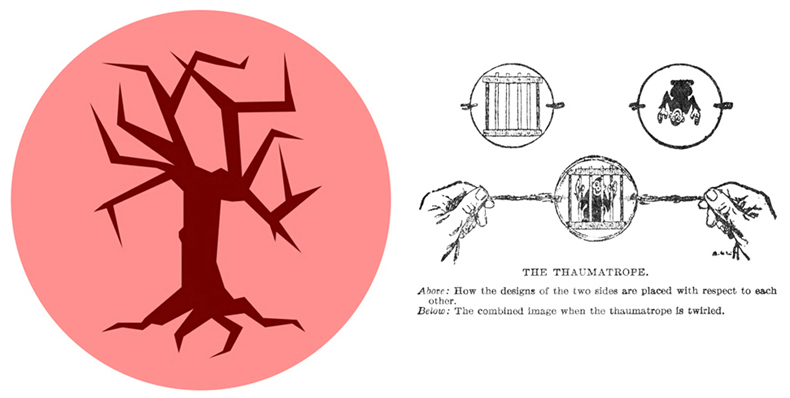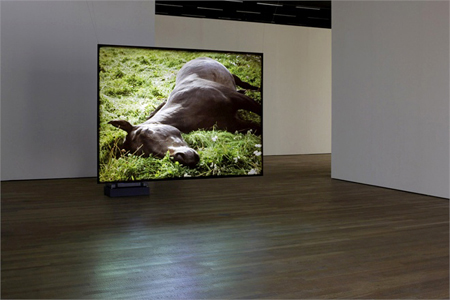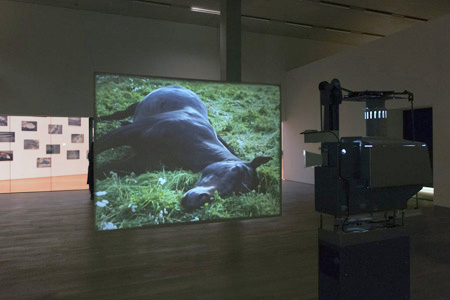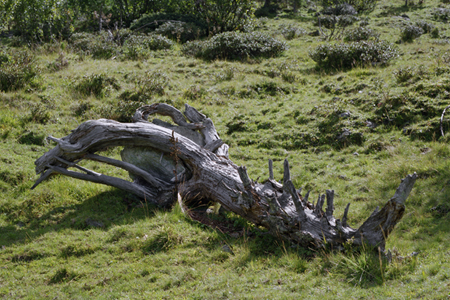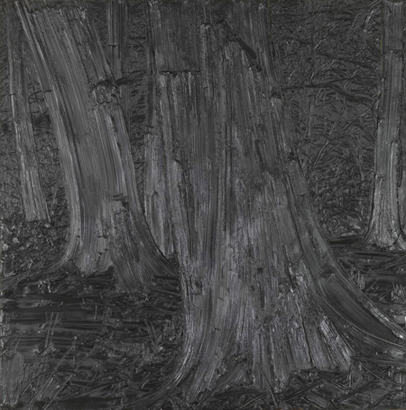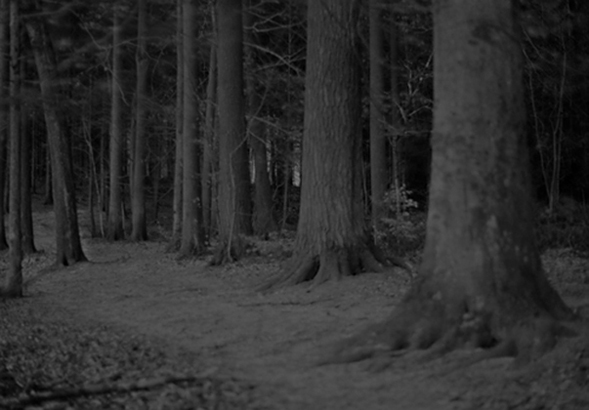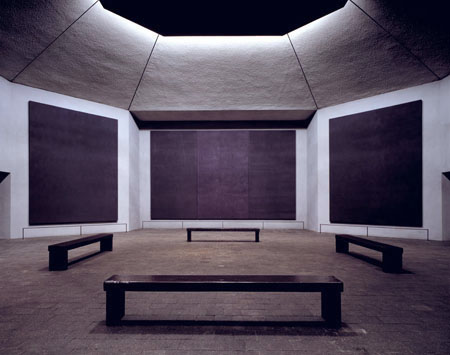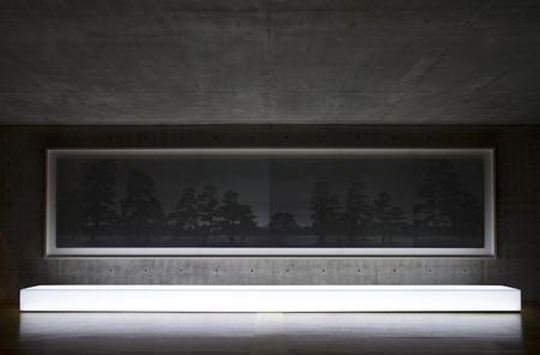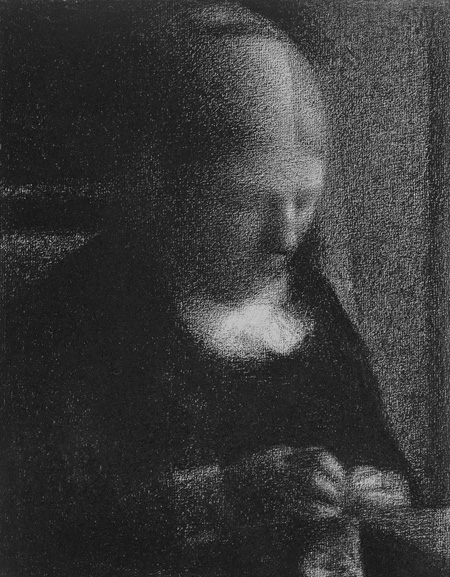User:Nicole Hametner/Graduate Research Seminar 2013-TM4.01
Project proposal outline
Introduction
|
|
Oscillating Shadows
|
In the final presentation the spectator finds itself in a delimited space surrounded by large projection screens. The perception lies in the center of my investigation and is challenged by an initially slight disorientation, comparable to a situation at night in a forest where the eye has to adapt to the low light. Then filmed night shots appear on the screens, one with a view of large buildings, another one with a scene of the harbour and one with a view of the seaside. Though instead of having the blinding lights of the city and the industry in the center, the dominant part will be the dark zones in the picture. Because of the slight underexposure of the video there will be temporal moving noise, flickering of pixels, which provokes a vibration in the shadows. The aim is a composition of different low light areas, a result of more or less abstract images with an urban, industrial and natural background. The scale of each screen monumentalize the picture and evokes the idea of standing in front of a full size landscape painting. Depending on the available space and the possible technical dispositiv, the films are shown either at the same time on different screens or in a sequence on only one. I would like to install translucent screen(s) hanged in the middle of the room, in order to varie between transparent window to the exhibition space and opaque surface with view on the filmed exterior scene. The semitransparency resumes the treshold that is inherent to the videographic nightshots themselves, where the underexposure can be seen as barrier between medium and revealed object. Hence the observer finds itself at a transitory passage, by his glance simultaneously here and there, he shifts between outside and inner world. I would like to work towards a viewer's impact that is situated between fascination and repulsion. On one hand the blackness and vibration in the dark zones should attract like a light. On the other hand the observer might have an anticipation linked to the idea of disappearance and loss. The feeling of an undefined menace could come up, like in Kafka's univers an obscure fear of getting lost. My attention is to evoke with the installation an affect that is situated between an nervous anxious feeling and pure contemplation. |
|
Relation to previous practice
Several interests and points of research have built a background that serves as constant reference and flows into the concrete creation of a new work. It can be seen as a complex structure, where each part influences mutually the others. For example the current research on the construction of the image and the look at the behaviour of the medium can be found in previous photographic works and was then once more animated by curiosity in the digital moving image, what seemed for me to be the counterpart of the stillness in analogue photography. Furthermore the project with the gaze treats with its subtle movement the idea of presence and absence what constitutes the whole construction of the time-based image and links to my previous work Schwarzes Licht, 2010. The theme of the night always allowed me to talk about the process, the latent image and to reveal the unseen. To sum up the initial period of research, the theme of disappearance in photography led together with the theme of the „nocturne“ from the romanticism to the subject of the limit of perception.
A short retrospective view in note form
- Aster, 2008: topic of the night in the center/ allows to talk about the process, reveal the unseen, latent image/ limit of perception, the invisible is the main referent/ theme of absence/ introspection, exp. portrait/ psychoanalysis/ exteriors becoming screens for inner images/ contemplation/ romanticism/ juxtaposition of pictural and photographic/ duration and instant
- Le Sapin, 2010: media specificity, woodcut-photography/ duration of production of a wooden matrice and long time exposures on a sheet film/ blackness, deep black of the matrices/ again the night as central element/ at the border of the visibility/ oscillate between negativ and positiv, day and night/ black and white images closer to our nightvision/ the process of photography, to freeze and solidify in silver/ between the pictural and the photographic/ materiality of the polaroid portrait, the photographic emulsion/ theme of the forest linked with the sublime/ portal to an imaginary world
- Schwarzes Licht, 2010: light installation/ role of the audience/ oscillation of present and absent image, latent image/ greek mythology/ Freud's three casket theory
- Montchoisi, 2011: from forest to the element of water/ its different states/ from frozen towards the constant flow (now in the digital video image)
- First Trimester at Piet Zwart: tried to link with previous investigations/ theme of perception/ techniques of the observer, 19th to 21st century/ pulsing thaumathrope, theme of the after image/ dematerialisation/ from stillness to moving image/ intrigued by the temporal moving noise in the underexposure digital image
The crucial unique instant while triggering the photograph turned into duration while using long time exposure, what I used a lot in my previous works. Now through thinking about the construction of the electronic moving image the factor of time again plays an important role and emerges the idea that the image as such is never present as a whole. This intriguing insight links to the role of the observer, its perception and the question where the actual image is created and what does it mean if it never exists all at once? These reflections increased my curiosity for the origin of the image, which can be understood as foundation that drives me in my current research.
Relation to larger context
I am approaching with a background in photography the electronic moving image towards the aspired aim to present the work in a videoinstallation.
Raphael Hefti/ Chris Cornish/ Valerie Mréjen/ Roni Horn/ James Turell/ Olafur Eliasson/ Bill Viola/ Gary Hill/ Harun Farocki/ Michael Snow/ Marie Jo Lafontaine/ Mark Lewis/ Fiona Tan/ David Claerbout/ Douglas Gordon/ Bruce Naumann/ Tacita Dean/ Runa Islam/ video art/ experimental and silent film/
Steve McQueen, Running Thunder, 2007
- installation with hanged screen in space
- reflections of the presentational mode
- photograph of a dead tree enclosing a stone
|
|
|
Gillian Carnegie, Black Square, 2008
- the contradiction between matter and image
- black painting of trunks with textured paint
- about the viewers position, his movement to reveal the image
- challenge of depicting a night scene
- do I have to simulate my vision at night?
- made me think of my previous work in the forest
- Carnegie also mixes genres, still life, landscapes, portrait > portraits next to landscapes
|
|
|
Mark Rothko/ Hiroshi Sugimoto
- precise idea of the work's installation
- necessity of a sensitive observer
- sense of the unknown
- transcendence of the individual
- towards spiritual experience
|
|
|
Black paintings
- abstract expressionism
- the sublime
Pointillism of Georges Seurat
- grid of dots
- structure of the paper
|
|
|
Small projects
Small projects to reflect about the graduation project
Thesis proposal
The shift from stillness to the moving image is based on my interest of the treshold to something that is in constant movement and thereby articulates the theme of presence/ absence and disappearance. In addition to that the juxtaposition of the analog photographic image and the digital moving image consequently evokes the question of indexicality and its materiality. My essay Black Box written in the second trimester approaches what is being transformed or "lost" in the analog digital conversion. For the thesis I would like to tie in with this point and ask the question about the construction of the image itself. Is the image dissolved during the process of conversion? And when it is argued that the digital moving image is under constant construction and never there as a whole, what does that mean for the origin of the perceived image in our own vision?
Bibliography
- Maurizio Lazzarato, Videophilosophy
- Laura Mark, How Electrons Remember
- Henri Bergson, Matter and Memory
- Jean François Lyotard, Les Immatériaux
- Tanizaki Junichiro, Praise of Shadows
- Paul Virilio, L'art à pert de vue
- Laura Mulvey, Death 24 times a second
- Jonathan Crary, Techniques of the Observer and Suspensions of perception
- TJ Clark, The Sight of death
- E.T.A Hoffmann, Interpretations
- Persistence of vision and adaption of the eye

